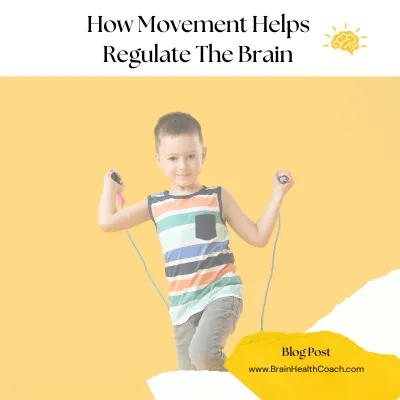Blog
Inspiration In Every Post

How Movement Helps Regulate The Brain
After months of research and therapies, I discovered my child's challenges were in part due to retained primitive reflexes. If you didn't catch the part 1 of this topic, check out the preceding article 3 Types of Moment That Help Regulate Your Child's Brain.
The Journey of Rebalancing Our Brain
At first, a child relies on primitive reflexes to perform basic movements such as sucking, grasping, and crawling. These reflexes help us learn how to move and interact with the world around them. As a child's brain develops, their motor control pathways become more sophisticated, and they begin to rely less on these reflexes.
Similarly, as a child becomes more confident and skilled in riding a bike, they no longer need the training wheels. They develop the balance, coordination, and control necessary to ride without them. In the same way, as a child's nervous system matures, they integrate primitive reflexes and rely more on voluntary movements.
So, just as training wheels help a child learn how to ride a bike, primitive reflexes help a child develop motor control. With time and practice, the child's nervous system becomes more refined, and they become capable of more complex movements and actions.
Our 9 Primitive Reflexes
Brain Balance reminded me of the nine primitives that I first learned about at University in an Intro to Childcare course.
First up, we have the Moro reflex, which acts as a baby's primitive fight/flight reaction. Typically replaced by the adult startle reflex by four months old, retention of the Moro reflex beyond this point can cause over-sensitivity and over-reactivity to sensory stimulus. This can lead to poor impulse control, sensory overload, anxiety, and emotional and social immaturity. Other signs of a retained Moro reflex include motion sickness, poor balance, poor coordination, easily distracted, inability to adapt well to change, and mood swings.
Next, we have the rooting reflex, which assists in the act of breastfeeding. Activated by stroking a baby's cheek, this reflex can cause difficulty with solid foods, poor articulation, and thumb-sucking if it is retained beyond four months.
The palmar reflex, or automatic flexing of fingers to grab an object, should integrate by six months. Retention of this reflex can cause difficulty with fine motor skills, tongue sticking out while writing, and messy handwriting.
The asymmetrical tonic neck reflex (ATNR), initiated when laying babies on their back and turning their head to one side, serves as a precursor to hand-eye coordination and should stop by six months.
The spinal galant reflex, which causes an infant to swing towards the side that was stroked, helps with the birthing process and should inhibit between three and nine months. Retention of this reflex is associated with poor posture, coordination, attention, and ability to sit still, as well as bedwetting.
The tonic labyrinthine reflex (TLR), which initiates when you tilt an infant's head backward while placed on the back, should integrate gradually as other systems mature and disappear by 3 1/2 years old. If retained, it can lead to poor muscle tone, a tendency to walk on toes, motion sickness, and poor balance.
The landau reflex, which assists with posture development, emerges around 3 months of age and should be fully integrated by one year. Retention of the this reflex can lead to short-term memory problems, poor motor development, and low muscle tone.
Lastly, the symmetrical tonic neck reflex (STNR), also known as the crawling reflex, should disappear by 11 months. Retention of the STNR can cause developmental delays related to poor muscle tone, a tendency to slump while sitting, and inability to sit still and concentrate.
When a child still has their primitive reflexes present, it can appear as ADD, ADHD and sensory processing symptoms.
How Do You Get Started? With Exercise!
Exercise is a crucial component of healthy brain development in children. Regular exercise can have a profound effect on a child's brain development and set the foundation for a lifetime of healthy cognitive function.
But that's not all - exercise also leads to the growth of new neurons in the brain, which can have a powerful impact on a child's organizational skills. This can result in significant improvements in areas such as planning school projects, completing homework, and exhibiting self-control.
Studies have shown that every time you move your body, beneficial neurotransmitters, including dopamine (happy hormone), Norepinephrine (fight-or-flight hormone), serotonin (carries messages between nerve cells), and acetylcholine (memory and body functions), all get released into the brain. All these neurotransmitters that are triggered by movement can help decrease feelings of anxiety and depression.
So, let's encourage our kids to get up, get moving, and enjoy the many benefits of physical activity!
Getting yourself and your children moving first thing in the morning can set them up for success for the rest of the day. In my house, we slowly incorporated movement into our morning routines. After many weeks of small changes and big shifts, we started to add more time to these exercises.
I've noticed that since we've started making little changes in our daily routines and incorporating movement into our morning routines, my child's overall attitude, energy levels, and focus at school have improved. My child is no longer needing special education classes, an IEP, or a 504 plan for academic assistance. If you're reading this and you have a child that sounds much like my child, take some time to research, try a few things, take away foods, or add exercises. Start by making small changes, and see if you notice any significant changes.
To learn more about my current coaching offers visit the Coaching Packages page.
©brain health coach | ALL RIGHTS RESERVED | Privacy | TERMS & CONDITIONS

